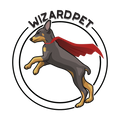HOW TO TELL - PETS ARE PLAYING OR FIGHTING?
If you live in a household with multiple pets, you are probably familiar with the occasional fights between your furry friends. As the saying goes, "everything is fun and games until someone gets hurt." However, despite being chased, run over, biting, growling, and growling, it can be hard to tell if abuse is "fun and fun."
Knowing the behavior and body language of your pets is key when it comes to understanding the difference between a play fight and a real fight between your cats and dogs; Knowing what to do when you stop a dog or cat fight is also helpful.
Why do pets fight?
Playing together is an important part of socializing. Most puppies and kittens start fighting with their littermates from a young age; Thanks to these game fights, they learn to communicate and control themselves. This is when furry babies begin to realize that if they bite or scratch their sibling too hard, the game is over.
As the puppies and kittens grow older, their playfulness remains unchanged. Regardless of age, play fighting is also good exercise, especially since it can help your pet consume some of that extra energy.
Additionally, in-game fights can be a healthy outlet for your pet to hunt. Chasing, stalking, and attacking are natural instincts for both dogs and cats, and chasing a furry companion is a fun way to play the role of both predator and prey.
Of course, there is the simplest explanation: fighting is fun! However, sometimes the game can go too far, or one pet may not show as much enthusiasm as another, and this playable fight can turn into a real fight.
Can cat and dogs play together?
Some fights are due to misunderstandings of body language, as cats and dogs communicate in different ways. For example, the wagging of a dog's tail generally indicates joy, while a cat may express more negative feelings.
While cats and dogs may not be the best of friends by nature, they can still get along with each other. Just make sure each pet has their own space to turn to when she needs it.
Fighting game: dogs
It is helpful for a pet owner to know if their dog is playing or fighting. After all, you don't want to unnecessarily steer him away from an innocent game; you also don't want the real fight to go on any longer than it needs to.
Signs that dogs are playing include:
Front down and back, like a game bow. Sometimes an excited dog may even hit the ground with its front paws to start the game.
Open mouth (like a big goofy smile)
Joyful and relaxed movement
Demonstrate vulnerability by "falling" and falling into a trap
Play bite (soft bite)
Moving the tail
Going back to the biggest and taking turns chasing each other
Signs that dogs are fighting include:
Lifted hair
Hard body
Closed mouth, sometimes with grunts or grunts
Curly lips
Pricked ears
Tail up (fear) or tail up (declaration of domain)
Short, fast strategic moves
Usually a short meeting in which the "loser" quickly leaves the scene.
If you are on a group date, never let your dog attack the dog, even if it seems like a game. This can quickly get out of control and create negative associations with overall communication, which can lead to anxiety. If your dog gets into dogfighting at the dog park a lot, it may be best for him to play with his companions at home and / or play dates with familiar dogs.
Dogs are natural territorial creatures, they must remember possessiveness in relation to toys and food and, if necessary, get them out of the situation.
If you notice that the dog is becoming territorial, or that one dog is not as enthusiastic as the other, it may be a good idea to intervene before the disinterest turns into annoyance and perhaps even aggression. Play with the most playful pup with a chew toy or play a game, so he can extract some of his playful energy without disturbing his friend.
For dogs with nervous energy, try Chews Wonderpet Care Premium Hemp Chews, which use natural ingredients to help calm and calm an anxious dog.

